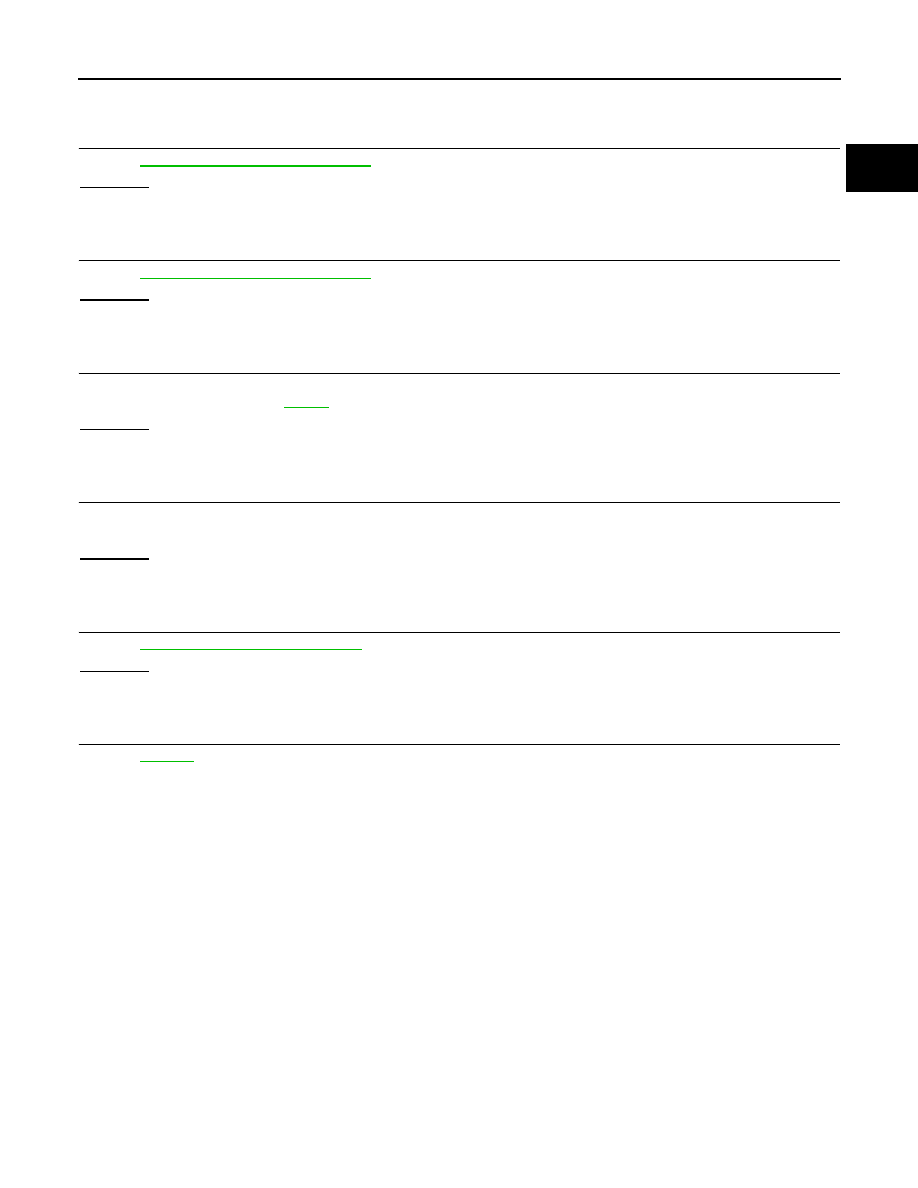Infiniti FX35 / FX45. Manual - part 408

DTC P0455 EVAP CONTROL SYSTEM
EC-393
< SERVICE INFORMATION >
[VQ35DE]
C
D
E
F
G
H
I
J
K
L
M
A
EC
N
P
O
OK
>> GO TO 16.
NG
>> Replace EVAP canister purge volume control solenoid valve.
16.
CHECK FUEL TANK TEMPERATURE SENSOR
EC-297, "Component Inspection"
OK or NG
OK
>> GO TO 17.
NG
>> Replace fuel level sensor unit.
17.
CHECK EVAP CONTROL SYSTEM PRESSURE SENSOR
EC-380, "Component Inspection"
OK or NG
OK
>> GO TO 18.
NG
>> Replace EVAP control system pressure sensor.
18.
CHECK EVAP/ORVR LINE
Check EVAP/ORVR line between EVAP canister and fuel tank for clogging, kink, looseness and improper con-
nection. For location, refer to
OK or NG
OK
>> GO TO 19.
NG
>> Repair or replace hoses and tubes.
19.
CHECK RECIRCULATION LINE
Check recirculation line between filler neck tube and fuel tank for clogging, kink, cracks, looseness and
improper connection.
OK or NG
OK
>> GO TO 20.
NG
>> Repair or replace hose, tube or filler neck tube.
20.
CHECK REFUELING EVAP VAPOR CUT VALVE
OK or NG
OK
>> GO TO 21.
NG
>> Replace refueling EVAP vapor cut valve with fuel tank.
21.
CHECK INTERMITTENT INCIDENT
>> INSPECTION END